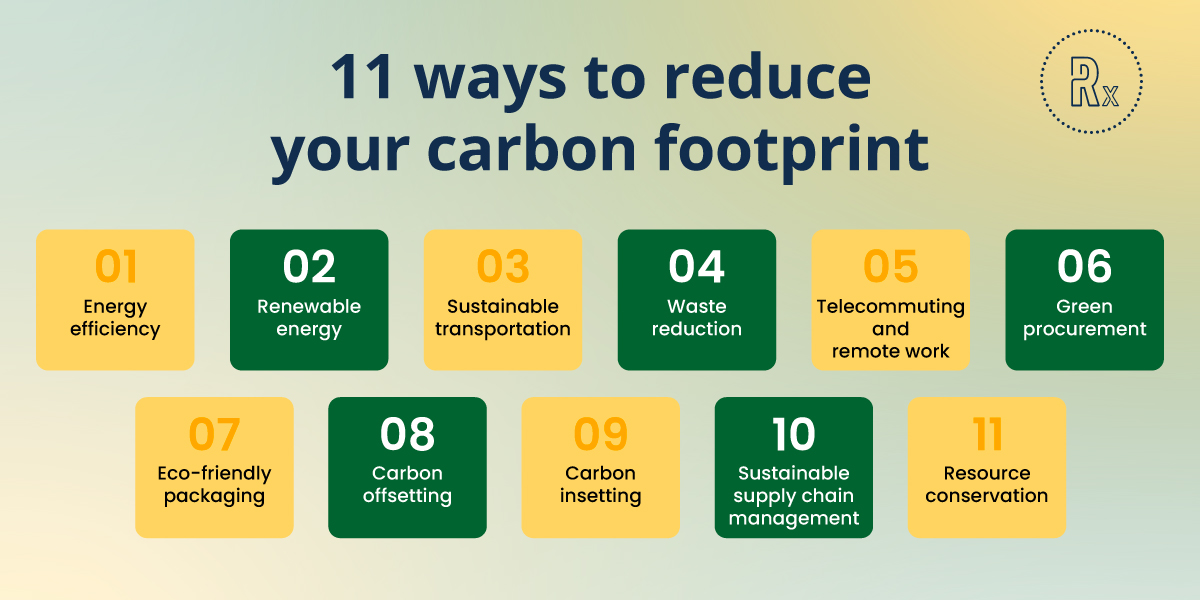Understanding the carbon footprint of a business is the first step towards achieving environmental impact. Essentially, a carbon footprint refers to the total greenhouse gas (GHG) emissions caused directly or indirectly by an organization.
As businesses strive to align with global sustainability targets, reducing their carbon footprint has become more than a compliance issue; it’s a core aspect of corporate responsibility and a strategic imperative for long-term success.
Understanding carbon footprints in business
The concept of a carbon footprint in business encompasses the entirety of GHG emissions associated with a company’s operations. These emissions are broadly categorized into three scopes:

1. Direct Emissions from Owned or Controlled. Sources (Scope 1): These include emissions from combustion in owned or controlled boilers, furnaces, vehicles.
For instance, if a company owns a fleet of trucks that emit exhaust gases, these emissions are considered Scope 1.
2. Indirect Emissions from the Generation of Purchased Energy (Scope 2): These are emissions released into the atmosphere associated with the consumption of purchased electricity, heat, steam, or cooling.
For example, if a company buys electricity to power its office building, the emissions from generating that electricity are Scope
3. Other Indirect Emissions that Occur in a Company’s Value Chain (Scope 3): These emissions are a result of activities from assets not owned or controlled by the reporting organization but that the organization indirectly impacts in its value chain.
Examples include the extraction and production of purchased materials, transportation of purchased fuels, and use of sold products and services.
Significantly, the majority of disclosed corporate GHG targets focus on reducing Scope 1 and Scope 2 emissions, with less emphasis on the more challenging Scope 3 emissions, which can account for over 50% of a company’s total GHG emissions.
The approach to carbon footprint reduction varies significantly across industries. For instance, sectors like apparel, infrastructure, and services tend to be more proactive in meeting their GHG reduction targets, while industries such as transportation and fossil fuels face more significant challenges due to the technological breakthroughs required for substantial reductions. This disparity highlights the need for tailored strategies that consider the unique challenges and opportunities within each sector
11 ways for companies to reduce their carbon footprint

1. Energy efficiency
Improving energy efficiency is a fundamental step in reducing a company’s carbon footprint. Energy-efficient practices and technologies can significantly reduce greenhouse gas (GHG) emissions.
For instance, the ENERGY STAR program for commercial buildings and industrial plants has helped organizations avoid nearly $200 billion in energy costs and nearly 2.7 billion metric tons of GHG emissions since 1992. On average, ENERGY STAR certified buildings use 35% less energy than typical buildings, illustrating the substantial impact energy efficiency can have on reducing carbon emissions.
2. Renewable energy:
Switching to renewable energy sources is crucial for companies aiming to reduce their carbon footprint. The benefits of renewable energy include reduced carbon emissions, enhanced reliability and security of power grids, and job creation in renewable industries. Renewable energy sources like solar, wind, and hydroelectric power provide cleaner alternatives to fossil-fuel-based energy, significantly lowering a company’s carbon emissions.
3. Sustainable transportation:
Adopting sustainable transportation methods can significantly reduce a company’s environmental impact. This includes using cleaner fuels, efficient vehicles, and promoting modes of transport like cycling and public transit. Sustainable transportation reduces greenhouse gas emissions, air and noise pollution, and contributes to mitigating climate change. Furthermore, it generates economic benefits by creating jobs and reducing fuel costs.
4. Waste reduction:
Reducing waste not only conserves natural resources but also cuts energy consumption associated with manufacturing and disposal processes. Businesses can save on supply costs, reduce waste disposal expenses, and meet consumer demand for environmentally conscious products by minimizing waste. Effective waste management includes strategies like recycling, reusing materials, and composting organic waste.
5. Telecommuting and remote work:
Encouraging remote work can significantly reduce emissions related to commuting. This not only contributes to a reduction in overall carbon emissions but also leads to cost savings for both employers and employees.
Working from home, even just one to two days a week, can reduce large amounts of energy for heating, cooling, and lighting at buildings. According to the US Environmental and Energy Study Institute research residential and commercial buildings are responsible for almost 40 percent of U.S. carbon dioxide emissions.
6. Green procurement:
Adopting eco-friendly procurement policies involves choosing suppliers and products that prioritize sustainability. This can include sourcing raw materials from sustainable practices, opting for products with minimal packaging, and selecting vendors who have a low carbon footprint.
7. Eco-friendly packaging:
“Food packaging accounts on average for 5% of the energy used in the life cycle of a product making it a significant source of greenhouse gas emissions.” (Teorra)
Using sustainable packaging materials helps in reducing carbon emissions. Biodegradable, recyclable, or reusable packaging options can significantly decrease the carbon footprint associated with packaging and shipping.
8. Carbon offsetting:
Carbon offsetting is a critical strategy for companies aiming to neutralize their unavoidable carbon emissions. It involves investing in projects that reduce or absorb carbon dioxide to compensate for emissions produced elsewhere. Examples of such projects include tree planting, forest preservation, and renewable energy projects like wind farms or solar installations.
While there has been some skepticism about the effectiveness of carbon offsetting, the consensus is that it makes a difference. It’s not a standalone solution for climate change but a vital component of a comprehensive strategy towards achieving net-zero emissions.
💡 Read more: Inset vs Offset: Understanding the Differences in Carbon Strategies
9. Carbon insetting:
Carbon insetting, a relatively recent and improved concept in carbon footprint reduction, is gaining traction as a transformative approach for businesses. It goes beyond merely offsetting emissions; insetting integrates sustainable practices into a company’s own supply chain, thereby reducing carbon emissions and enhancing overall sustainability.
One of the prevalent methods in carbon insetting is through agroforestry projects. These projects involve planting trees within agricultural systems, which are beneficial for both carbon sequestration and enhancing biodiversity.
💡 Read more: Carbon Insetting Examples: How Companies are Reducing Their Emissions Internally
10. Sustainable supply chain management:
Building a sustainable supply chain involves working with suppliers to reduce their carbon footprint, which in turn lowers the overall emissions of the company. This includes sourcing from suppliers who use renewable energy and practice sustainable manufacturing.
11. Resource conservation:
Efficient use of resources like water, energy, and raw materials can significantly reduce a company’s carbon footprint. This involves implementing conservation practices throughout the business operations.
Attain ‘Carbon Neutral’ with regenerative agriculture
As we’ve explored, there are numerous strategies companies can adopt, from energy efficiency to carbon insetting and offsetting.
One of the best ways to reduce an F&B business’s carbon footprint, as suggested by COP28, is through investing in and sourcing from regenerative sources, turning healthy soil into a carbon sink.
To assist businesses in reducing their carbon footprint, RegenX helps facilitate a finance stream from businesses to regenerative farmers. Moreover, with one centralized platform, your business can track the impact your investment has on farmers’ livelihoods, the community, and the Earth. Contact us now to learn about how we can offset and inset your carbon.



